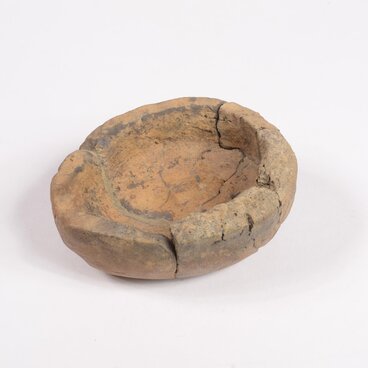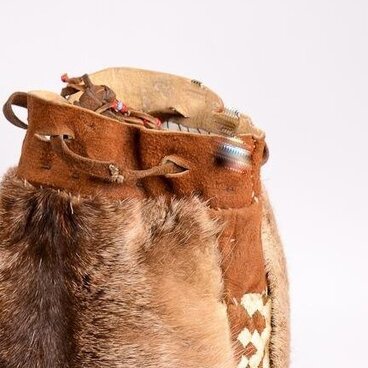The Khanty and the Mansi have different points of view regarding the time of the appearance of reindeer herding: from the first centuries of the 2nd millennium AD up to the 18th century. According to most researchers, the Ob-Ugrians adapted reindeer herding from the northern Samoyeds, i.e. the tundra and forest Nenets and Enets. The Khanty raised domestic Nenets reindeer, they are adapted to life in the taiga zone. This is a group of the smallest Siberian forest reindeer. The Khanty’s reindeer herding is organized according to the taiga type, it is also called by-the-house herding: the reindeer are kept near the dwellings, they are allowed to graze no further than 150 kilometers from them.
Among the northern peoples, reindeer is considered the main wealth, and a large herd of deer is a guarantee of prosperity. The reindeer is harnessed to a sled. Moreover, for the Khanty, these animals are not only a means of transport. Reindeer bones are used to make needles, arrowheads, harness details and even works of arts and crafts. Warm shoes and clothes are made from the skin, which are necessary on the territory of Siberia in winter, while the meat is eaten. The processed tendons are used for a variety of needs: they make strings for musical instruments, sew birch bark dishware and clothes. Usually the threads are made from the tendons of young reindeer, as they are the easiest to work with.
First, the tendons are dried, this process takes up to 15 or 20 days. They should not be dried near an open fire or in direct sunlight, otherwise quality and durability will not be great. The tendons are usually left outdoors in the shade of trees.
After the material dried, the thread making process begins. The tendons are folded two or three times and tied, then kneaded or beaten with a hammer on a hard surface until they disintegrate into small fibers. They are flattened and connected into one long fiber, wetting the ends and twisting between the index and thumb. On average, the length of the finished thread reaches 50 centimeters.
Tendon threads are stored on pre-dried bones of birds, elk or sable. The threads are tied to the bone, and the loose ends are braided. The exhibition “Ugra Heritage” displays undressed and dressed tendons, as well as ready threads tied to the wood grouse bone. These exhibits demonstrate the whole process of making reindeer tendon threads.
Among the northern peoples, reindeer is considered the main wealth, and a large herd of deer is a guarantee of prosperity. The reindeer is harnessed to a sled. Moreover, for the Khanty, these animals are not only a means of transport. Reindeer bones are used to make needles, arrowheads, harness details and even works of arts and crafts. Warm shoes and clothes are made from the skin, which are necessary on the territory of Siberia in winter, while the meat is eaten. The processed tendons are used for a variety of needs: they make strings for musical instruments, sew birch bark dishware and clothes. Usually the threads are made from the tendons of young reindeer, as they are the easiest to work with.
First, the tendons are dried, this process takes up to 15 or 20 days. They should not be dried near an open fire or in direct sunlight, otherwise quality and durability will not be great. The tendons are usually left outdoors in the shade of trees.
After the material dried, the thread making process begins. The tendons are folded two or three times and tied, then kneaded or beaten with a hammer on a hard surface until they disintegrate into small fibers. They are flattened and connected into one long fiber, wetting the ends and twisting between the index and thumb. On average, the length of the finished thread reaches 50 centimeters.
Tendon threads are stored on pre-dried bones of birds, elk or sable. The threads are tied to the bone, and the loose ends are braided. The exhibition “Ugra Heritage” displays undressed and dressed tendons, as well as ready threads tied to the wood grouse bone. These exhibits demonstrate the whole process of making reindeer tendon threads.



